This eerie abandoned theme park looks like something out of a disaster movie, and surprisingly, a natural disaster did strike here, adding to the list of misfortunes the park has endured. Despite its bad luck and local ghost stories, there might be a fresh start on the horizon for this neglected attraction. Read on to uncover its intriguing tale…
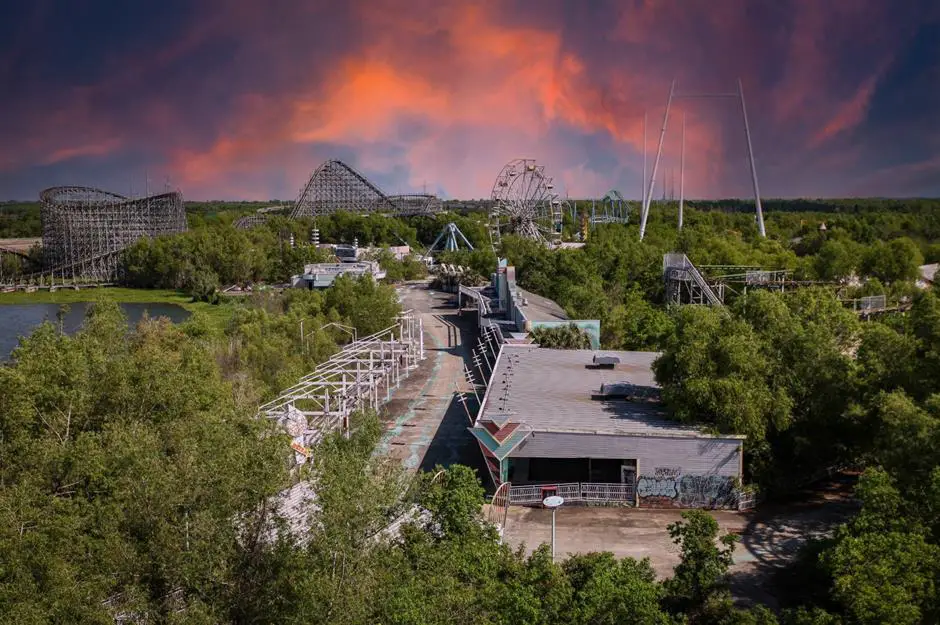
In 2003, Six Flags New Orleans opened with great fanfare and high expectations, presenting itself as a major attraction for Louisiana. However, what seemed like a promising beginning quickly turned to disappointment, and within just two years, the park’s doors closed, seemingly forever. Today, the remnants of the deserted park peek out from under the overgrown vegetation as nature reclaims the old rides and attractions. Photographer Leland Kent from Abandoned Southeast has captured the site in all its faded glory.
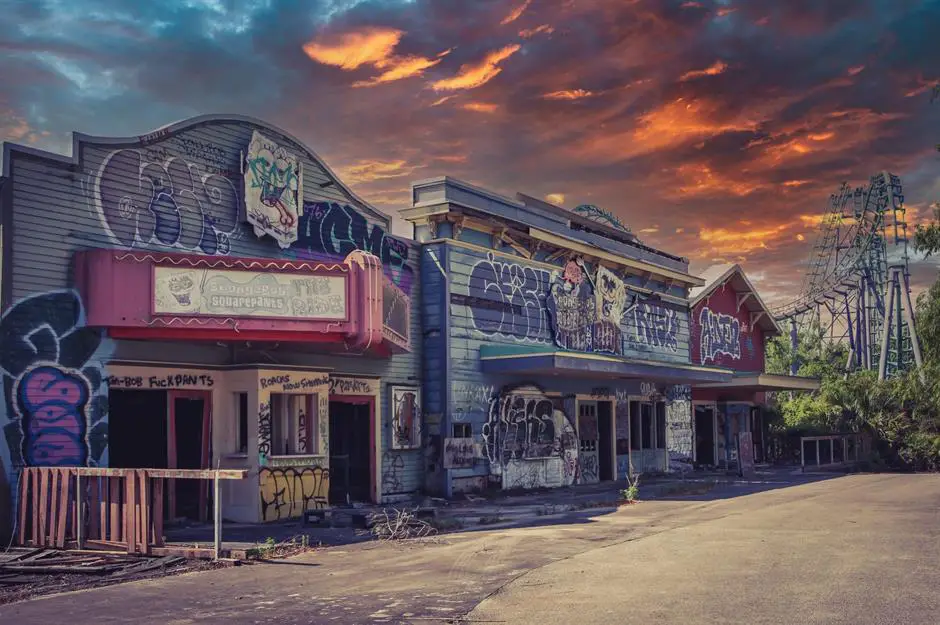
Before its Six Flags days, this place was known as Jazzland. It made its debut in 2000 as a 140-acre amusement park with a New Orleans theme, built at a staggering cost of $130 million (£97 million). Sections like Mardi Gras, Jazz Plaza, and Cajun County offered thrilling rides with a taste of the city’s music and culture. When you visit the park now, many of the original rides are still standing, making it hard to believe that it has been abandoned for 17 years.
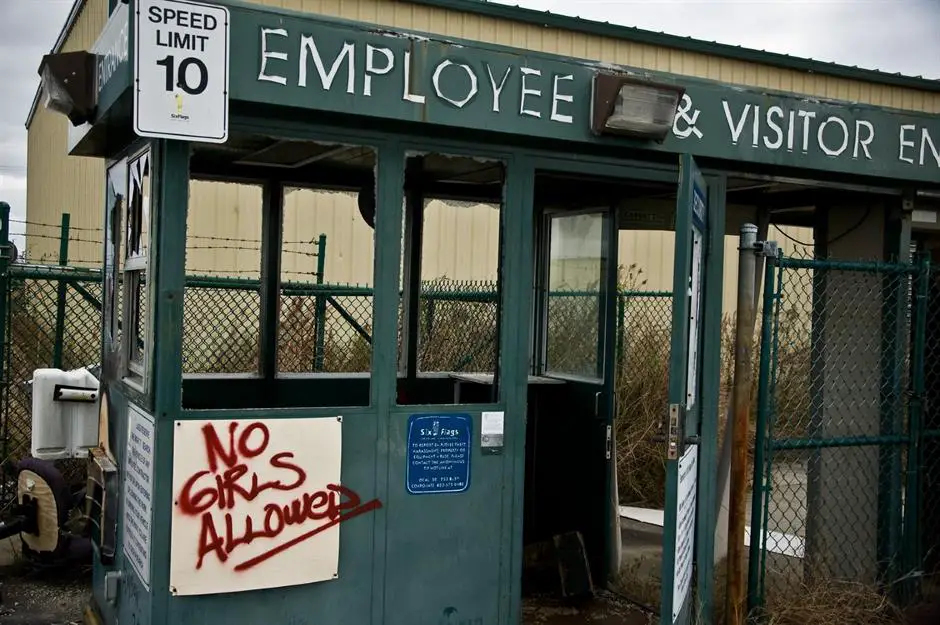
As you enter the park, you’ll find the original ticket booth with its inviting door, but its once-white lettering has been marred by angry red graffiti. Despite an initially promising start, Jazzland couldn’t turn a profit, and just two years after its grand opening, the owners filed for bankruptcy. Some might argue that a venture born from bankruptcy was doomed from the start…
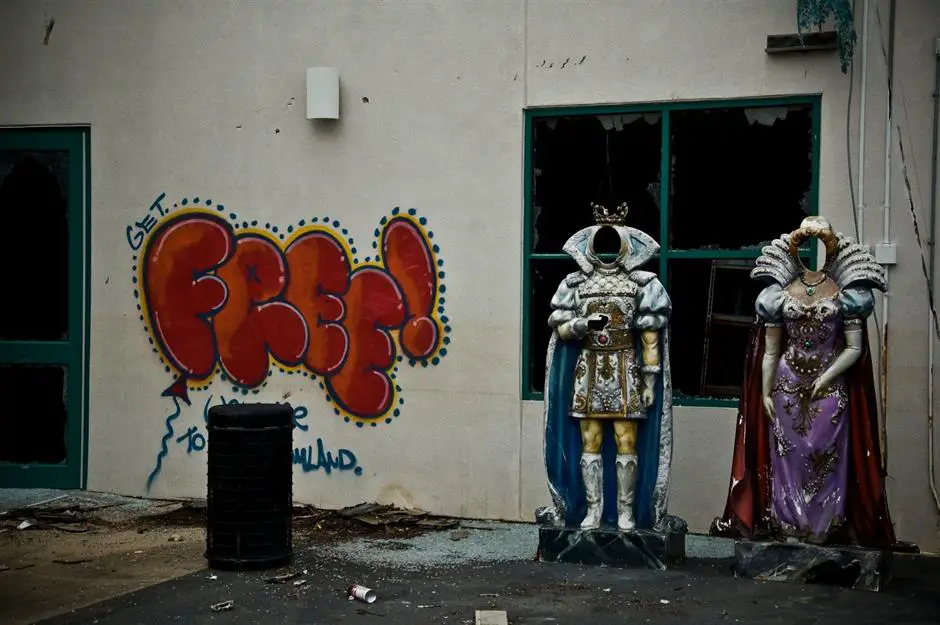
But the demise of Jazzland didn’t deter the amusement park giant Six Flags Entertainment Corporation. They purchased the site for $69 million (£52 million) and reopened it in 2003, rebranding it as Six Flags New Orleans. The park received a massive $20 million (£15 million) infusion for much-needed improvements, positioning it as a top destination for families, friends, and thrill-seekers. However, the park now stands as a shadow of its former self, with crumbling, faceless cartoon characters and eerie graffiti.
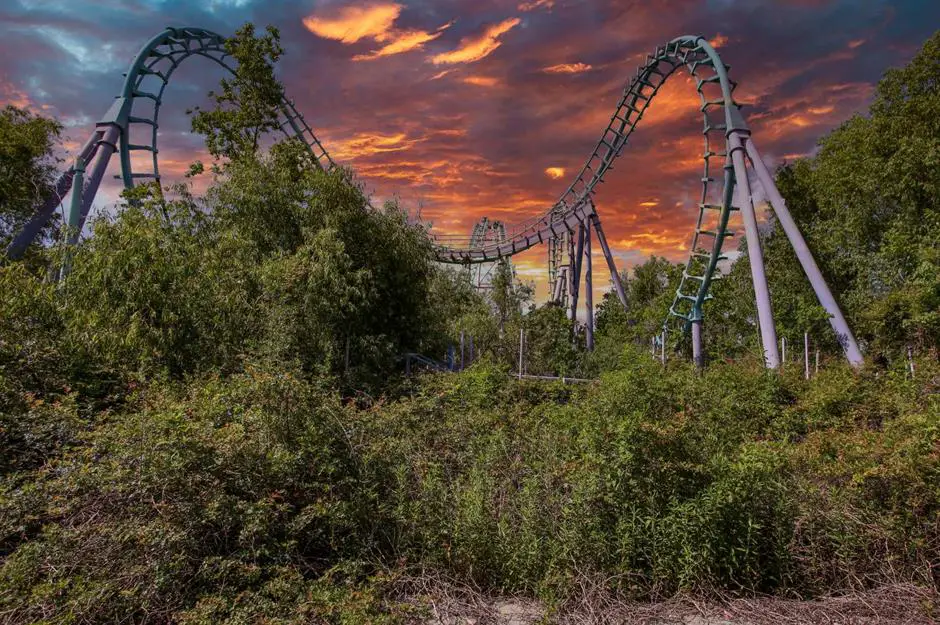
One of the major attractions was its state-of-the-art ride technology, like the Jester rollercoaster, named after Batman’s nemesis the Joker. It featured multiple loops and even ran backward in some sections. It’s astonishing to see how nature has swiftly swallowed this once hi-tech structure under a blanket of green leaves.
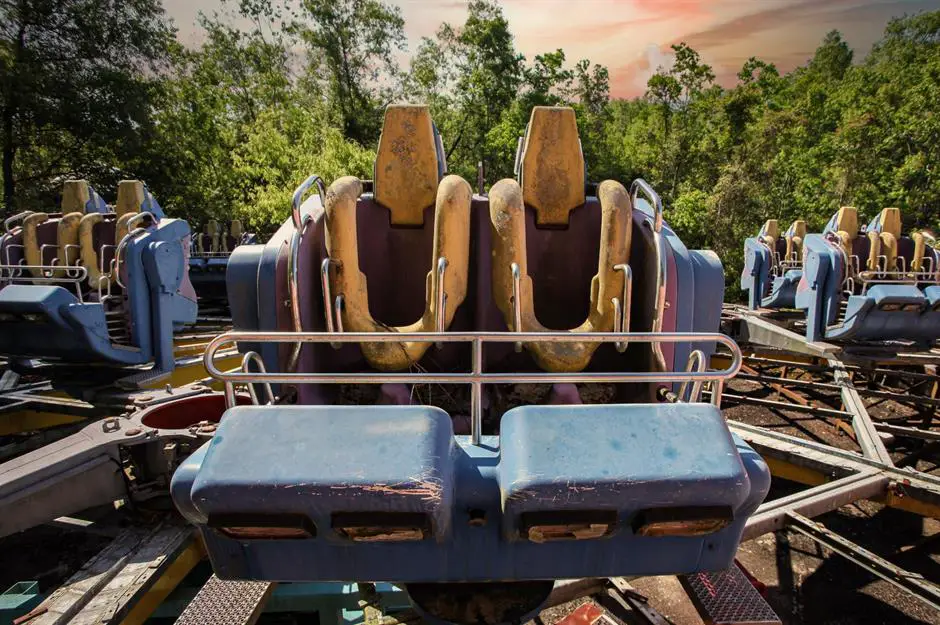
Picture visitors strapped into this slowly decaying spinning ride, waiting to be launched into the air. Yet, it wasn’t the scariest ride at Six Flags. That honor goes to Batman: The Ride, an inverted rollercoaster that held its passengers upside-down while zooming through looped tracks. It was originally brought from a defunct Japanese theme park and has since been relocated to Six Flags Texas.
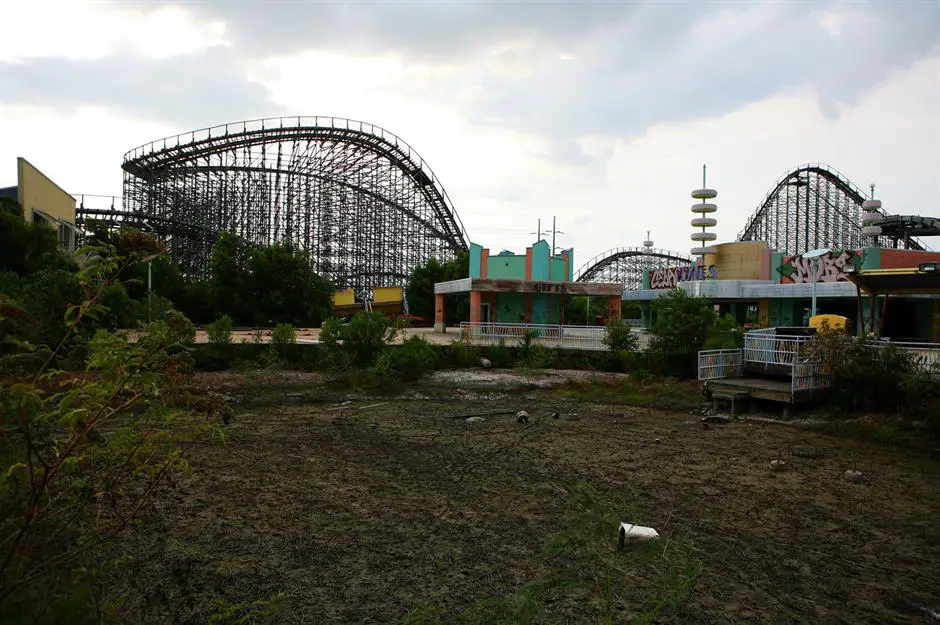
In the background, you can see the mesh framework of another prominent ride at the park. The Mega Zeph was Jazzland’s star attraction and remained popular under the Six Flags name. This coaster had a unique design, with a 4,000-foot wooden track built on a steel frame. Today, it’s deteriorating in this abandoned space.

Situated so close to picturesque Lake Pontchartrain, this ride would have offered breathtaking views to its passengers. The Big Easy Ferris wheel stands motionless in this 2011 photo, but one can envision it creaking back to life and beginning to turn once again. The Big Easy is a nickname for New Orleans, reflecting the city’s relaxed lifestyle.
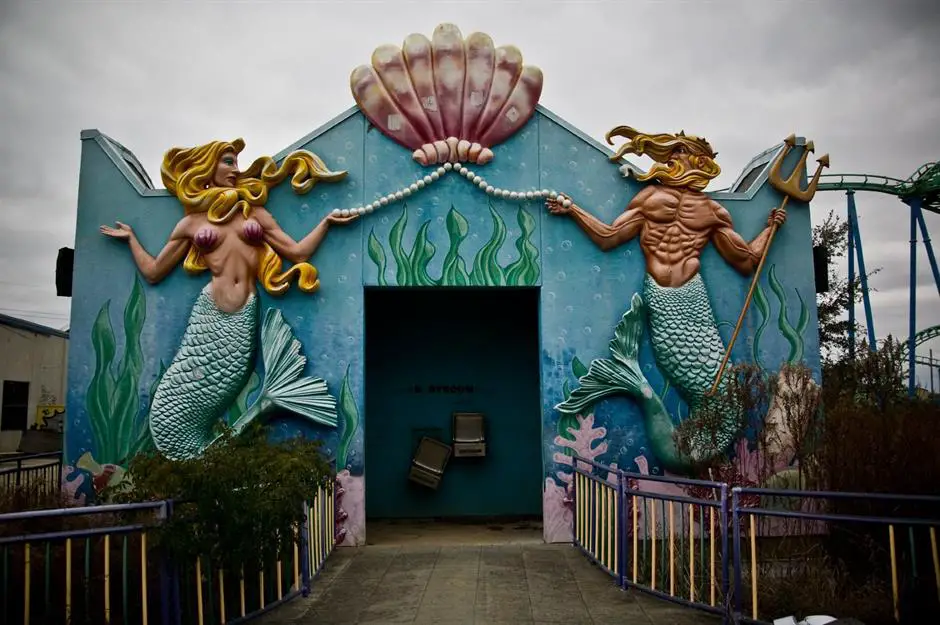
This restroom, adorned with an aquatic-themed design featuring a mythical mermaid and merman, was surprisingly still standing in 2010. It’s an unusually decorative exterior for a simple restroom, with faded lettering over the doorway. The characters may appear more creepy than cute, though.
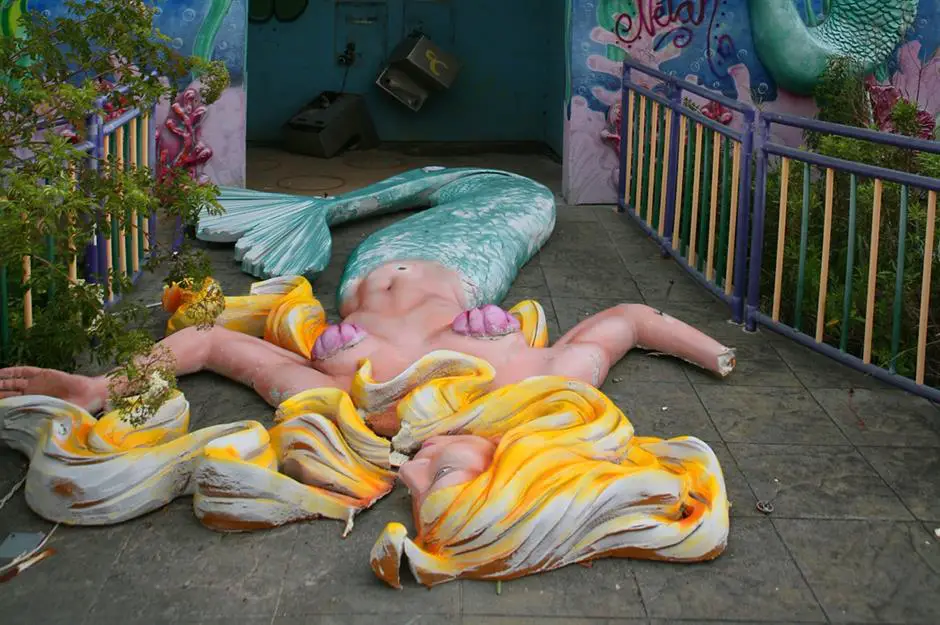
By 2011, the mermaid had been removed from the building and lay broken in pieces on the ground, with vandals scribbling on the walls. It’s disheartening to witness such a unique building being mindlessly destroyed.
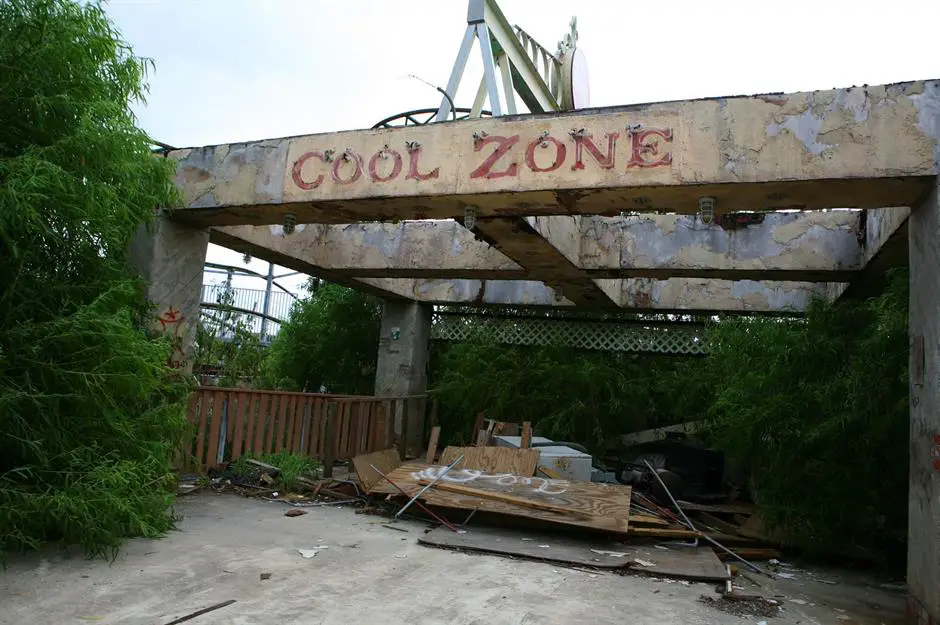
Photographed in 2011, the entrance to the Cool Zone was located in the Mardi Gras section of the park. Seven years later, you can see how the trees have encroached upon the structure, while debris accumulates beneath.
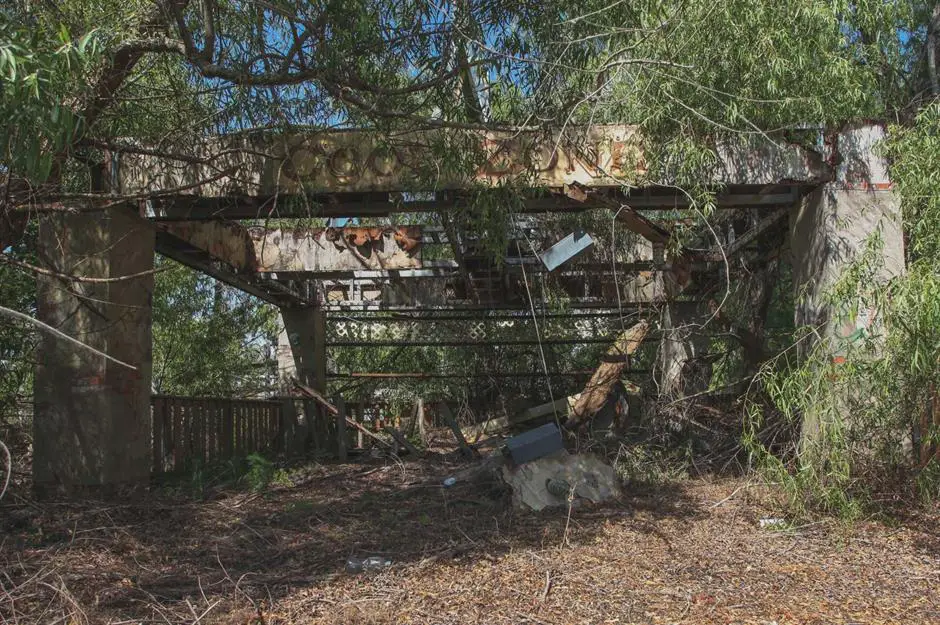
Despite Six Flags’ significant investment in their New Orleans park, it failed to turn a substantial profit. Similar to Jazzland, the site became a financial burden, seemingly plagued by bad luck.
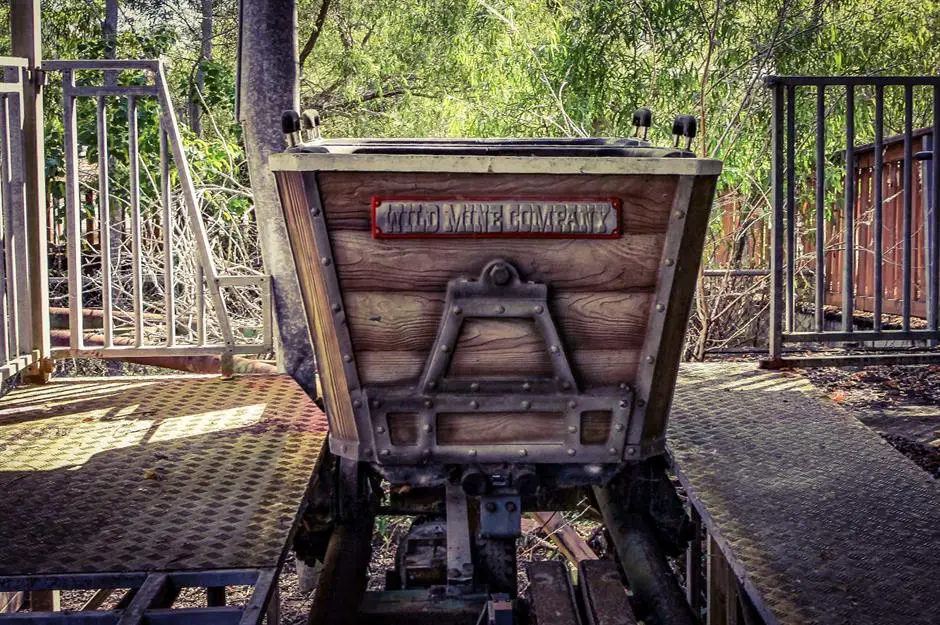
Nonetheless, having signed a 75-year lease with the City of New Orleans as part of the acquisition, Six Flags was committed for the long term. This carriage from the Wild Mine Company ride appears relatively well-preserved compared to other parts of the park.
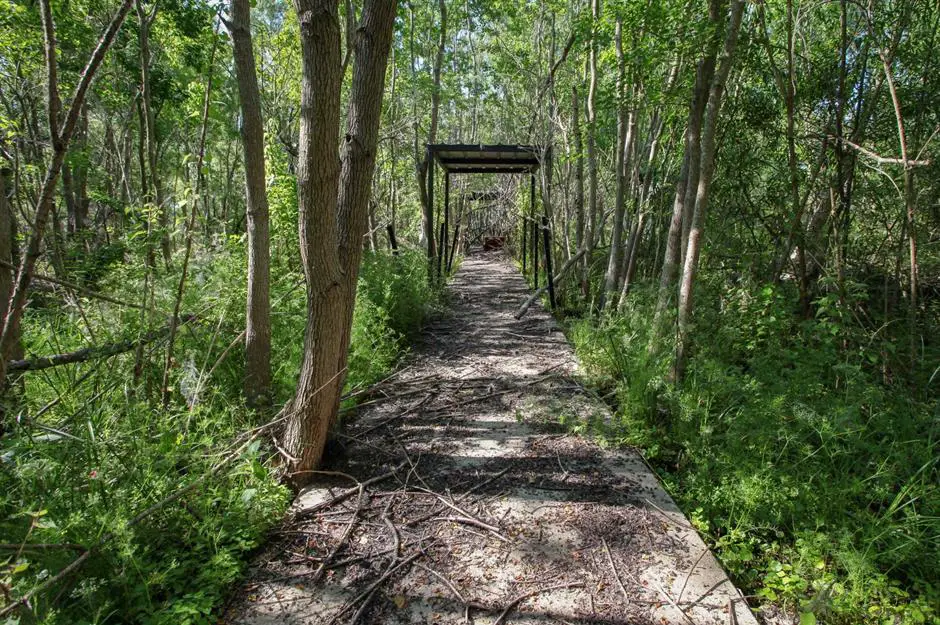
Tragedy struck in July 2003 when a 52-year-old grandmother was hit by a ride vehicle, leading to her unfortunate demise. The incident occurred as she was securing her four-year-old grandson into the Joker’s Jukebox ride, which began unexpectedly.
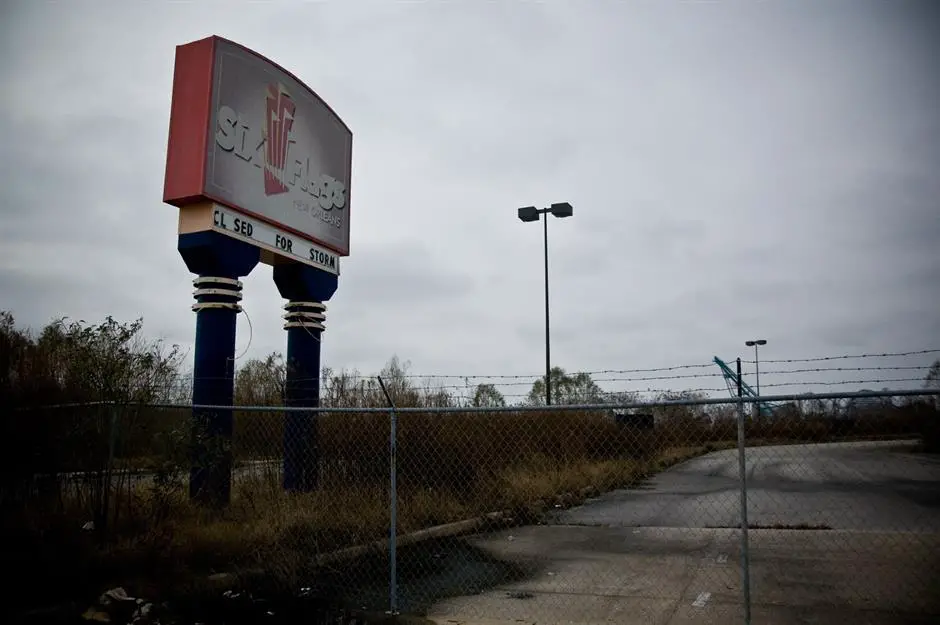
Then, in August 2005, just two years after its grand opening, Six Flags New Orleans closed its doors due to a severe storm warning. The park would never reopen. The main sign, photographed in 2010, remains as a reminder of the day everything came to an end.
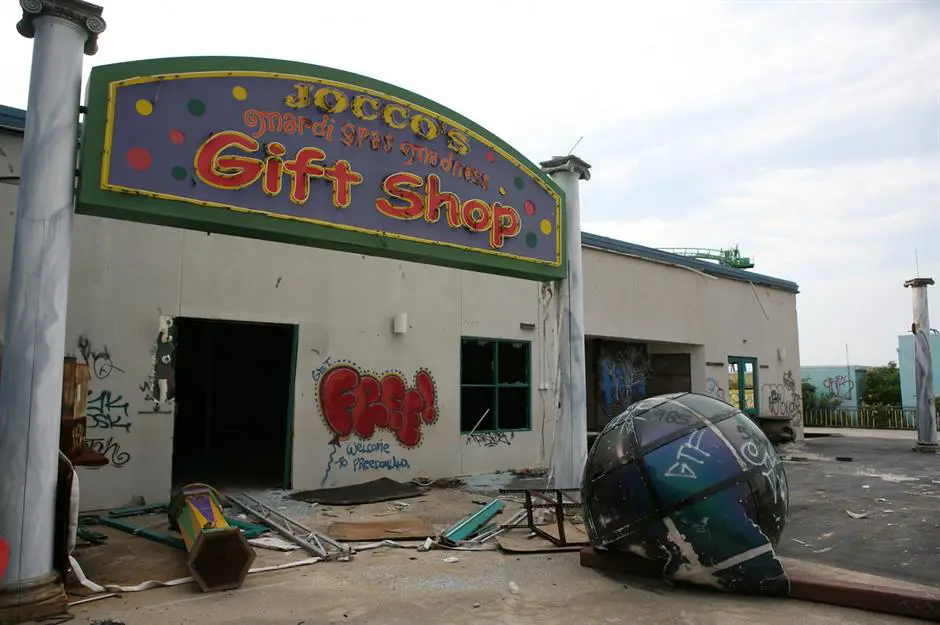
Shortly after the park’s closure for the storm, Hurricane Katrina devastated New Orleans. This category five storm killed over 1,800 people and left millions homeless, causing widespread destruction. The theme park did not escape the hurricane’s wrath. Imagine the powerful winds tearing through this derelict gift shop in the Mardi Gras zone.
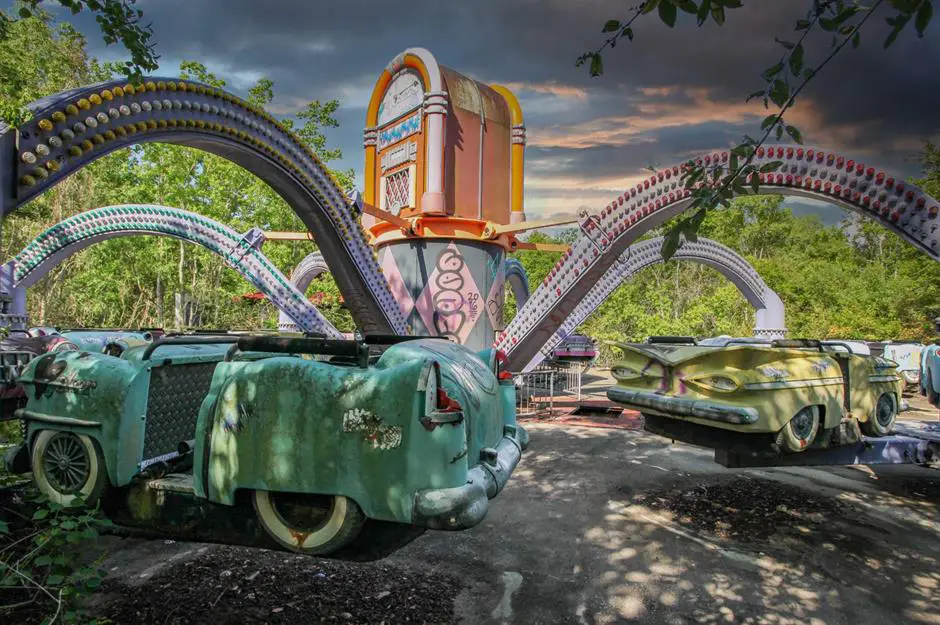
But more misfortune was to follow. Lake Pontchartrain, the second-largest inland saltwater body in the United States, overflowed, submerging the entire park in six feet of floodwater. Corrosive water remained for over a month, leaving rust marks on the ride cars, which had been battered by the hurricane.
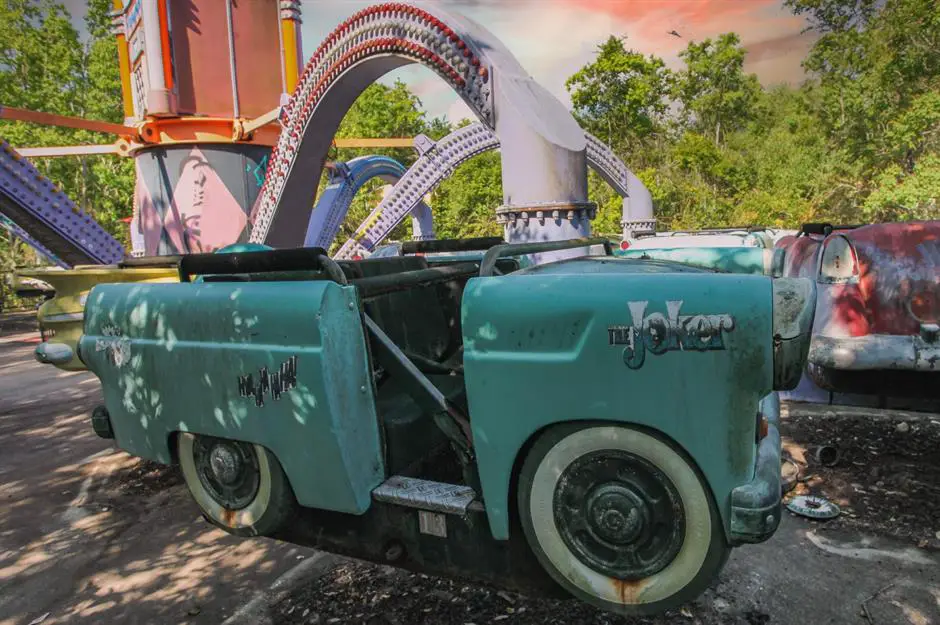
Despite this challenging history, the park’s future may be turning a new page. The city of New Orleans has reportedly approved plans by a local developer to transform the vacant lot into a hotel, waterpark, sports complex, and movie set. Change may be on the horizon, but there’s an undeniable air of mystery surrounding this abandoned theme park.
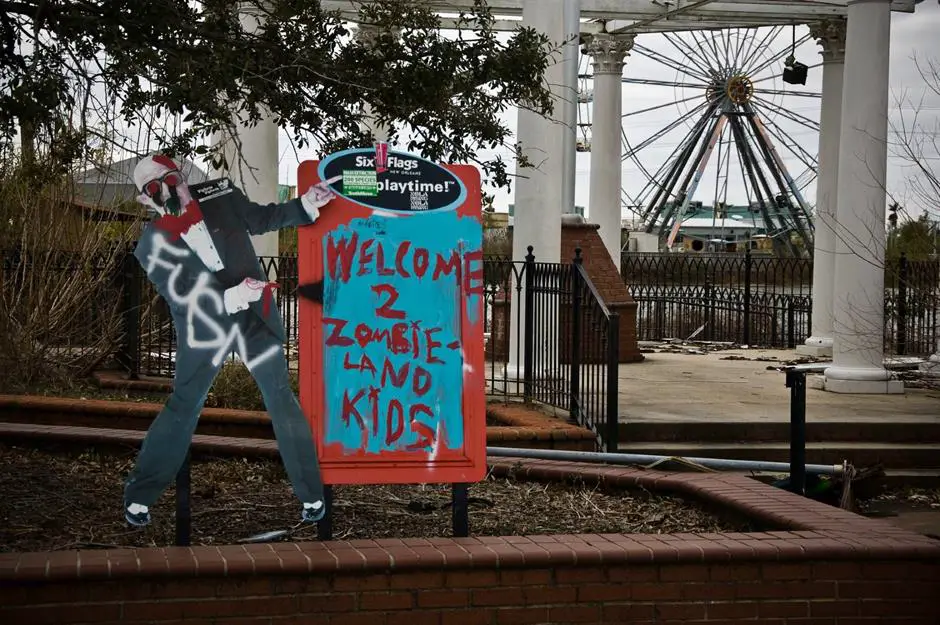
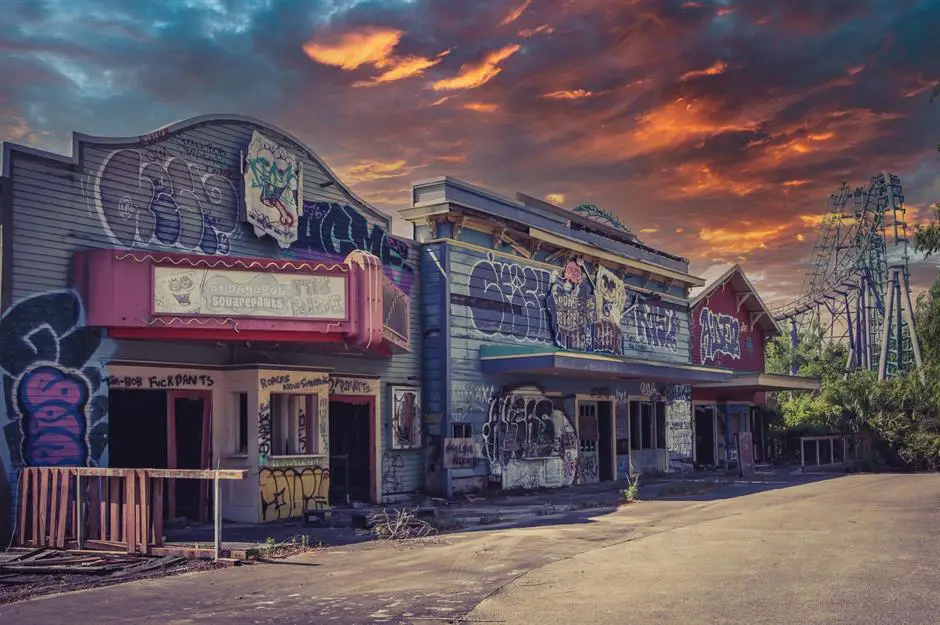
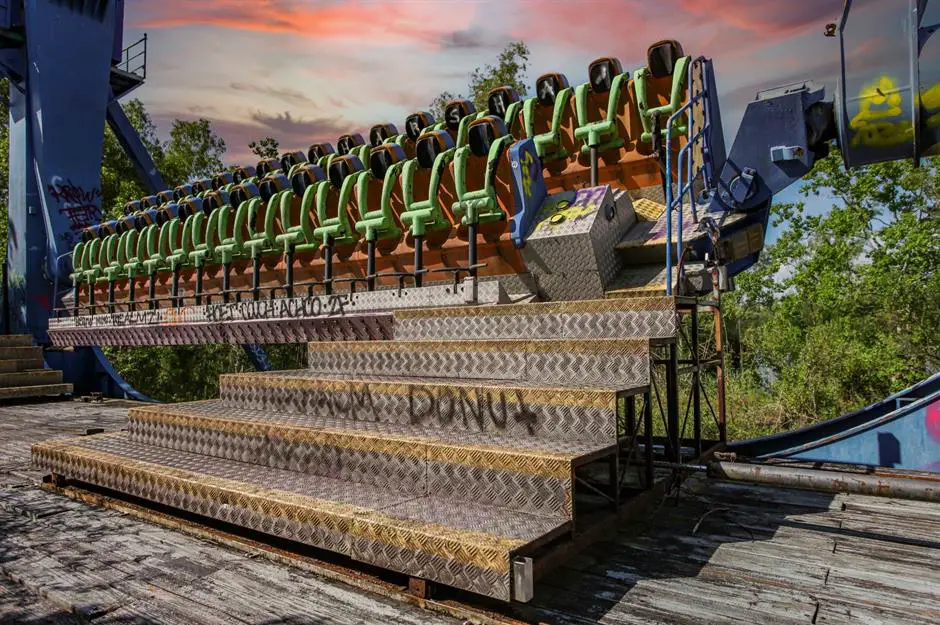
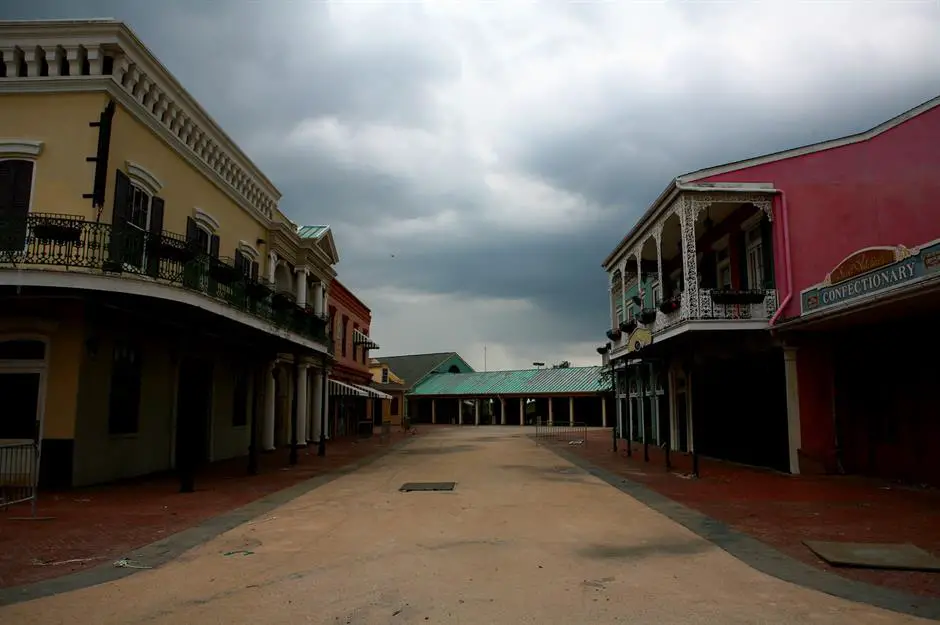
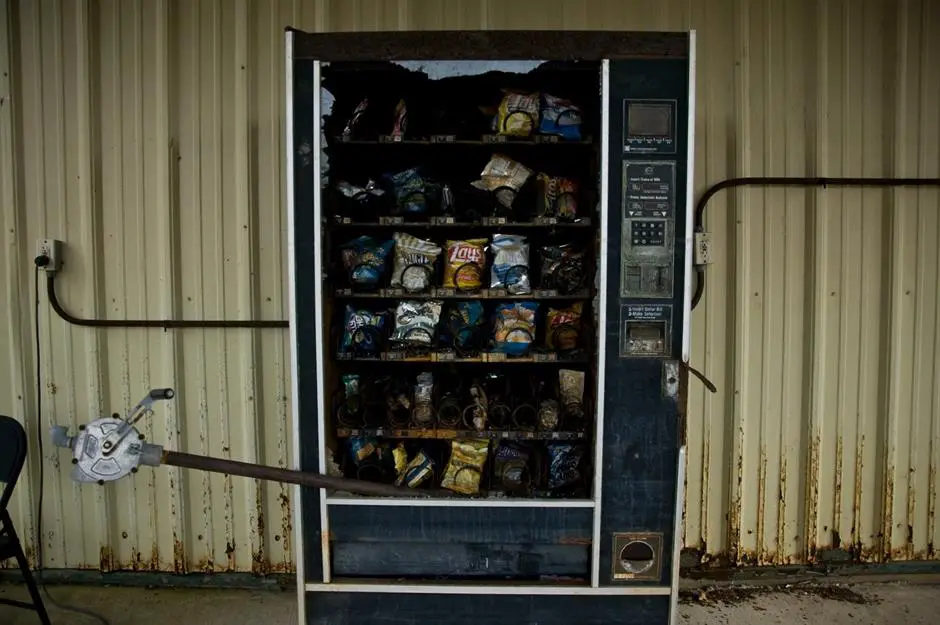
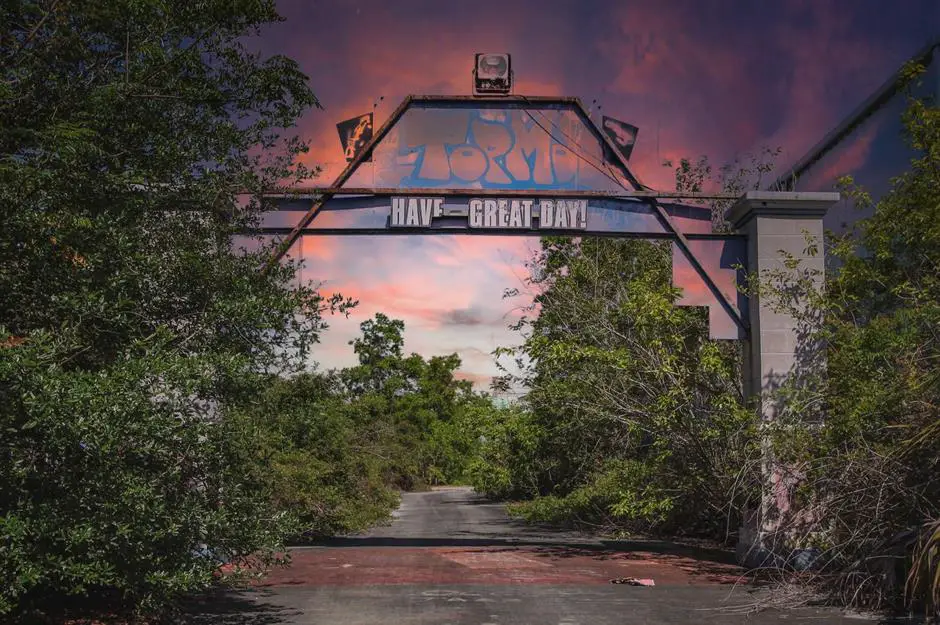
You can see more of Leland Kent’s incredible photography in his latest book, Abandoned Alabama: Exploring the Heart of Dixie.